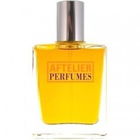05/30/2025

ClaireV
969 Reviews

ClaireV
1
Mushrooms sauteed in Kerrygold butter, with a hint of mint
Interesting! First, a whiff of aromatic woods and wet, bitter green “privet hedge” notes which briefly remind me of the camphoric opening of Carnal Flower, before relaxing into a damp, earthy brownness that I assume is the cèpes part of the equation. But then the scent swivels to the left into an accord that, on my skin, is 50% caramel sweetness and 50% pure Irish butter (Kerrygold, if you must know). In fact, it is so buttery that it smells like a smear of oily butter left on the back of your hand after breakfast, a sort of sweet but rancid type of smell. According to Perfume Shrine, this type of note is butyric, meaning the scent of butter. Once you’ve smelled it, you know how different this type of note is to creaminess or milkiness.
With time, the earthy nuances of the mushroom recede, and the salted caramel and butter facets take over. What surprises me about the earth, candied notes, and butter here is that this is a tuberose that smells much more like the idea of gardenia I hold in my head than the actual gardenia in Cuir de Gardenia. The rubbery and mentholated aspects of tuberose are not present at all; just the sweet, creamy Irish butter aspects and a trace of leathery bitterness underpinning it all. It is, honestly, not something I enjoy because the butter undertones make me feel a bit nauseous and over-sated.
If I could do anything to “fix” this scent (presumptuous of me, I know), I would extend the earthiness of the mushroom note, so as to retain the balance between earth and butter all the way through to the end. Myrrh often smells mushroomy and damp to me, so I tried wearing a little dab of myrrh oil on another part of my wrist, but I’m not sure that it was a successful experiment as the two never really merged. Still, if even not to my taste, Cèpes and Tuberose occupies prime position on NST’s list of 100 perfumes that everyone should sniff in their lives, and to my mind, it deserves that place. Using mushroom notes to temper the almost offensively creamy, sweet, buttery facets of tuberose is a novel approach, and it makes me wonder why it is not more commonly attempted in perfumery.
With time, the earthy nuances of the mushroom recede, and the salted caramel and butter facets take over. What surprises me about the earth, candied notes, and butter here is that this is a tuberose that smells much more like the idea of gardenia I hold in my head than the actual gardenia in Cuir de Gardenia. The rubbery and mentholated aspects of tuberose are not present at all; just the sweet, creamy Irish butter aspects and a trace of leathery bitterness underpinning it all. It is, honestly, not something I enjoy because the butter undertones make me feel a bit nauseous and over-sated.
If I could do anything to “fix” this scent (presumptuous of me, I know), I would extend the earthiness of the mushroom note, so as to retain the balance between earth and butter all the way through to the end. Myrrh often smells mushroomy and damp to me, so I tried wearing a little dab of myrrh oil on another part of my wrist, but I’m not sure that it was a successful experiment as the two never really merged. Still, if even not to my taste, Cèpes and Tuberose occupies prime position on NST’s list of 100 perfumes that everyone should sniff in their lives, and to my mind, it deserves that place. Using mushroom notes to temper the almost offensively creamy, sweet, buttery facets of tuberose is a novel approach, and it makes me wonder why it is not more commonly attempted in perfumery.




 Top Notes
Top Notes  Rosewood
Rosewood Heart Notes
Heart Notes  Moroccan rose
Moroccan rose Tuberose
Tuberose Base Notes
Base Notes  Benzoin
Benzoin Cep absolute
Cep absolute

 Gandix
Gandix Dorabella
Dorabella Yatagan
Yatagan






























